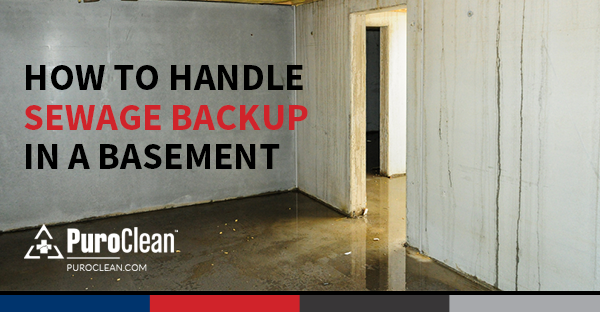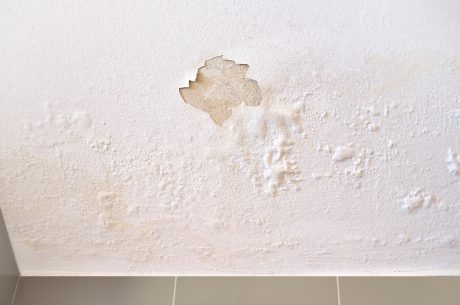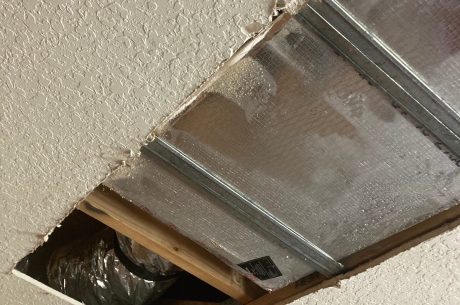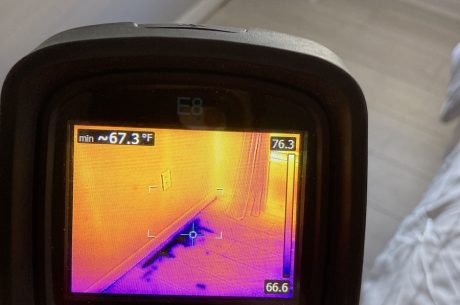 Aside from spending time and money to fix a sewage backup problem, sewage flooding also presents serious health hazards. Sewage contains contaminants like bacteria, fungi, parasites, or viruses, which makes dealing with the flooding yourself a health risk.
Aside from spending time and money to fix a sewage backup problem, sewage flooding also presents serious health hazards. Sewage contains contaminants like bacteria, fungi, parasites, or viruses, which makes dealing with the flooding yourself a health risk.
Not only is a DIY job dangerous, but moisture may hide behind walls, and further problems like mold growth can follow. Calling a professional restoration company is the best way to deal with a sewage flood in your basement.
How To Handle Sewage Backup in a Basement
However, here’s what you can do to mitigate the damage in your basement before the restoration team arrives:
- Evacuate the Flooded Area: Sewage contaminants are hazardous not only to humans but also to pets. Ensure that everyone, including pets, evacuates the flooded area immediately.
- Turn off electrical power in the flooded area: Standing water in contact with electrical wires or appliances creates a severe risk of electric shock. Turn off the electrical power in the flooded area If the main circuit breaker is located in the basement, proceed with extreme caution. If you cannot safely turn off the power, do not approach any electrical devices or outlets.
- Wear protective clothing: Before walking through sewage water, put on a facemask, eyeglasses, gloves, and rubber boots. These will help protect you from harmful contaminants.
- Shut off the main water line. Shut off the valve for your home’s main water line to prevent additional water from entering and exacerbating the problem. For more information, check out guides on how to shut off utilities during a disaster.
- Notify your insurance company: Inform you insurance company about the sewage backup. Remember that standard homeowners insurance does not cover sewer backups unless you’ve purchased extra endorsements for sewers and drains. Learn more about homeowners insurance and water damage.
- Notify your municipal authority: If your home is connected to a public sewer system, notify your municipal authority or sewer department about the backup. They can help identify and address the root cause of the problem, potentially preventing future occurrences.
- Avoid using water supply: Do not use the water supply system in your home until the backup problem is fully resolved. Avoid flushing toilets, draining tubs, and sinks to prevent further complications and additional water entering the system.
- Ventilate the Area: Open windows and doors to allow fresh air to circulate and ventilate the area. Proper ventilation helps to reduce the risk of airborne contaminants and odors, making the environment safer for cleanup efforts.
- Disinfect Standing Water: Add chlorine bleach to the standing water to help disinfect it. This initial disinfection step can reduce the spread of harmful bacteria and pathogens, making the cleanup process slightly safer.
- Begin Cleanup and Restoration: Once the immediate dangers are managed, begin the cleanup process. Remove standing water using a wet/dry vacuum rated for wet use, or use mops and buckets for smaller amounts of water. Clean and disinfect all surfaces thoroughly using a mixture of water and bleach (1:10 ratio) to ensure all contaminants are removed. Follow up with a thorough disinfection to kill any remaining bacteria and pathogens. Dry the area completely using dehumidifiers and fans to prevent mold growth. Ensure all affected areas are dried thoroughly to prevent future issues.
Learn more about the top causes of basement flooding to help prevent these disasters in the future. Additionally, check out seven key tips to keep your basement dry and avoid mold growth and structural problems. Contact your local PuroClean office for mold remediation services and water damage repair.
PuroClean is a leading commercial and residential restoration franchising company. Founded in 2001, the company offers fire and water cleanup and restoration services, mold mitigation and remediation, and biohazard cleanup and removal throughout the United States and Canada through its franchise network of 240 offices.



 PuroClean Certified Restoration Specialists
PuroClean Certified Restoration Specialists